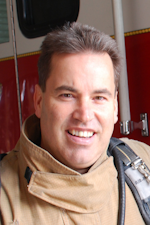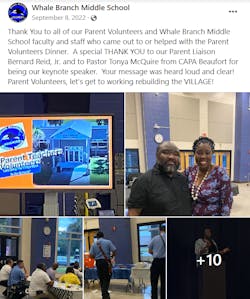Community Risk Reduction: Successful CRR: The Long Game
Many of my previous columns—and the core basis of my community risk reduction (CRR) approach—have been about relationships (for example, “Would You Take Advice from You?”, uncomplicating the process (e.g., “Don’t Let the Steps of a CRR Program Intimidate You”) and revisioning CRR as more than reductions of risk but the development of a resilient community of immediate responders (including “Redefining the ‘First Responder’ and Reimagining CRR”). I also have contended that the misunderstanding and misuse of CRR programs as simple public relations, data collection or individual educational programs have resulted in inefficient service delivery and missed opportunities (“What Makes a CRR Program Successful?”).
Although getting out of your station and addressing immediate risks are the basis of a CRR program—and something certainly is better than nothing—a solid CRR program that produces beneficial results in both the community and departmental operations should be approached as a long game. Individual victories—a CPR or Stop the Bleed save, a smoke alarm save, a fire extinguisher save or a reduction in a particular response category—are great, but true community change—true CRR for the long term—requires buy-in, belief, trust and persistence from the organization as well as the community.
As I emphasized in my most recent column (“To Post or Not to Post: A Picture Is Worth a Thousand Words”), the first steps in successful CRR are the members of the community acknowledging that a risk exists and understanding the effects of that risk to such a degree that they are willing to make adjustments in their life or accept and support a community policy change. The larger the community, the more that this becomes a challenge. Although the approach is determined by the size of your CRR staff, large or small, the concept remains: Long-term permanent change is a long game effort.
Get involved, develop relationships
This means not just showing up when you are invited to give a presentation or when someone requests you. This means more than knocking on classroom doors once per year. This means more than showing up only to events that are directly related to your program.
CRR isn’t about you. It’s about your citizens and your community and what they need, regardless of whether it’s a real need or a perceived need or even whether it’s risk- or hazard-related.
Fire departments historically gravitate only toward issues and problems that are directly fire service-related. Limiting yourself to that not only can cripple your CRR efforts but your department’s overall daily value in your community (“A Call for Fire Departments to Remain Relevant”), and you lose out on developing those relationships and building that needed community trust for accepted change. Essentially, you become the proverbial fire extinguisher on the wall of a business: It’s there because it has to be, maintained minimally and valued only when it’s needed, but day to day, it’s forgotten and hardly noticed, maybe even challenged for why it even is needed.
Departments must listen to what the concerns of their community are. In “The Strategic War for Resilient Communities”, I equated CRR divisions and personnel to the intelligence branches in the armed forces, the folks who are out in the community—daily—gathering intelligence and winning hearts and minds. Regardless of what the risks and concerns of a community are or whether they are a fire service risk to deal with, fire departments must have a seat at the table of solutions to either provide them, support the solutions of other agencies, or, just as importantly, to simply share their concern and show that the agency is invested in the well-being of that community.
Enhanced daily value
How can you justify time on issues that aren’t directly fire service-related?
First, you might be surprised to discover that, no matter what the concern is, the fire department might, in fact, be capable of contributing to the solution to that concern and, in doing so, spread its service delivery (value) a bit. For example, if citizens are concerned about speeding vehicles on their streets, which is primarily a law enforcement issue, a fire department still can assist in the matter with awareness campaigns, by helping to support solutions by providing statistics, and by including vehicle safety discussions in its community presentations and on its social media accounts.
In Chief Rick Lasky’s impactful book, “Pride and Ownership: A Firefighter’s Love of the Job,” among many of the community programs that he hits upon, he writes of how his department made a practice at the start of every school year to position its apparatus in strategic locations with awareness banners that concern school zones and children. Although Lasky’s effort didn’t solve the problem, it supported the overall solution, making it stronger, and it also demonstrated to his community’s members that his department and firefighters hear and share the citizens’ concern and are willing to roll up their sleeves and return the tax dollars that they are provided to help to address it.
Second, when you sit in on meetings and community discussions on concerns, you put yourself in close proximity to other important stakeholders, community leaders, media and citizens who are active in the community. These folks often are the very same people from whom you will need assistance and support to address a fire service-related risk or concern.
Continual exposure to and discussions with these folks not only are where mutually beneficial relationships are recognized and built but also where solutions that are offered by other agencies can be improved and reinforced for an overall safer community (CRR). For example, a community’s efforts to attempt to address a homeless problem as the winter approaches isn’t a traditional fire service problem to solve. However, well-intentioned agencies that are desperate to find a solution and a government body that’s eager to expedite one can produce a solution that could end in disaster if fire codes and safety aren’t part of the discussion (e.g., the Ghost Ship in Oakland, CA).
By continually being at the table and helping other agencies to find solutions to non-fire service-related problems, a fire department can provide input that strengthens those solutions and helps other stakeholders to realize the value of having the fire department be a part of those discussions. Not only is this where your department’s daily value begins, it’s where relationships and trust develop with others who have the resources, drive, and ability to mutually address community concerns and to make lasting change.
Recognized and trusted
The types of relationships that are noted above aren’t built overnight; they are built over months and years of slowly and continually working together. This only can happen when fire departments—and CRR personnel—see beyond their immediate risks and see the whole community and its concerns as their own. Gather that intelligence, peruse the local media (including social media), to learn what meetings key organizations and agencies are holding and/or what problems that they are having. Be present at everything from community meetings and public events to local school gatherings and performances. Be that continuously involved uniform that they see and can trust.
By showing your community your involvement, commitment and concern for them no matter the cause, you will find that you and your agency will be seen as that daily valued service and needed voice and will have the professional recognition and trust that are needed to address your identified risks at their very core—attitudes and behaviors—which are the long-term results that are needed for long-term change—and the whole purpose of CRR.

Daniel Byrne
DANIEL BYRNE is a community support officer for the Burton Fire District, Beaufort County, SC, and a retired assistant fire chief of training for the Georgia Air National Guard 165th Fire Department. A third-generation firefighter, he holds an associate degree and a bachelor’s degree in fire science as well as a master’s degree in public administration and disaster management. Byrne is an alumnus of the National Fire Academy. He received state and local awards for public relations and educational programs as well as community partnerships and served as a conference presenter and keynote speaker.






